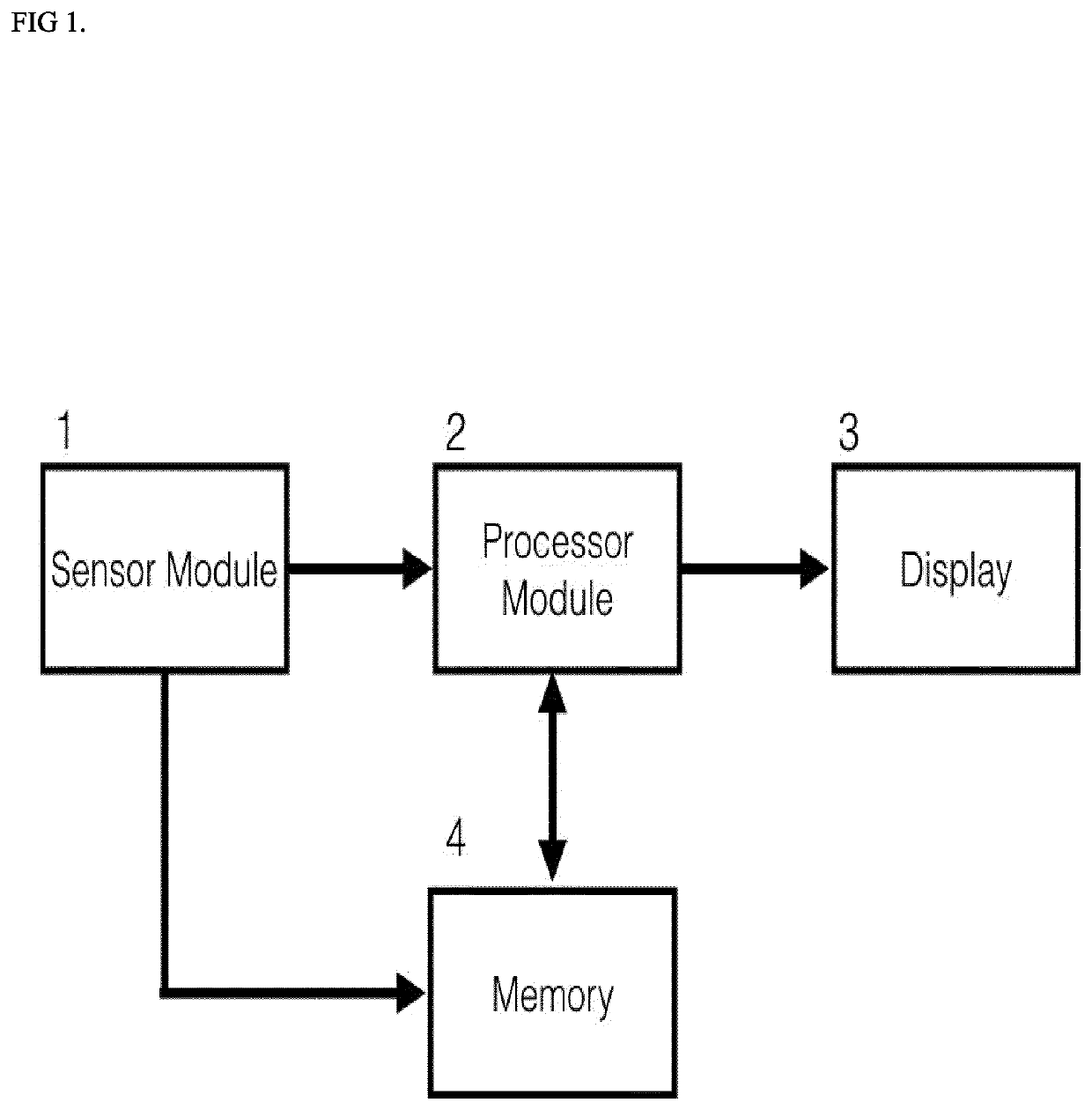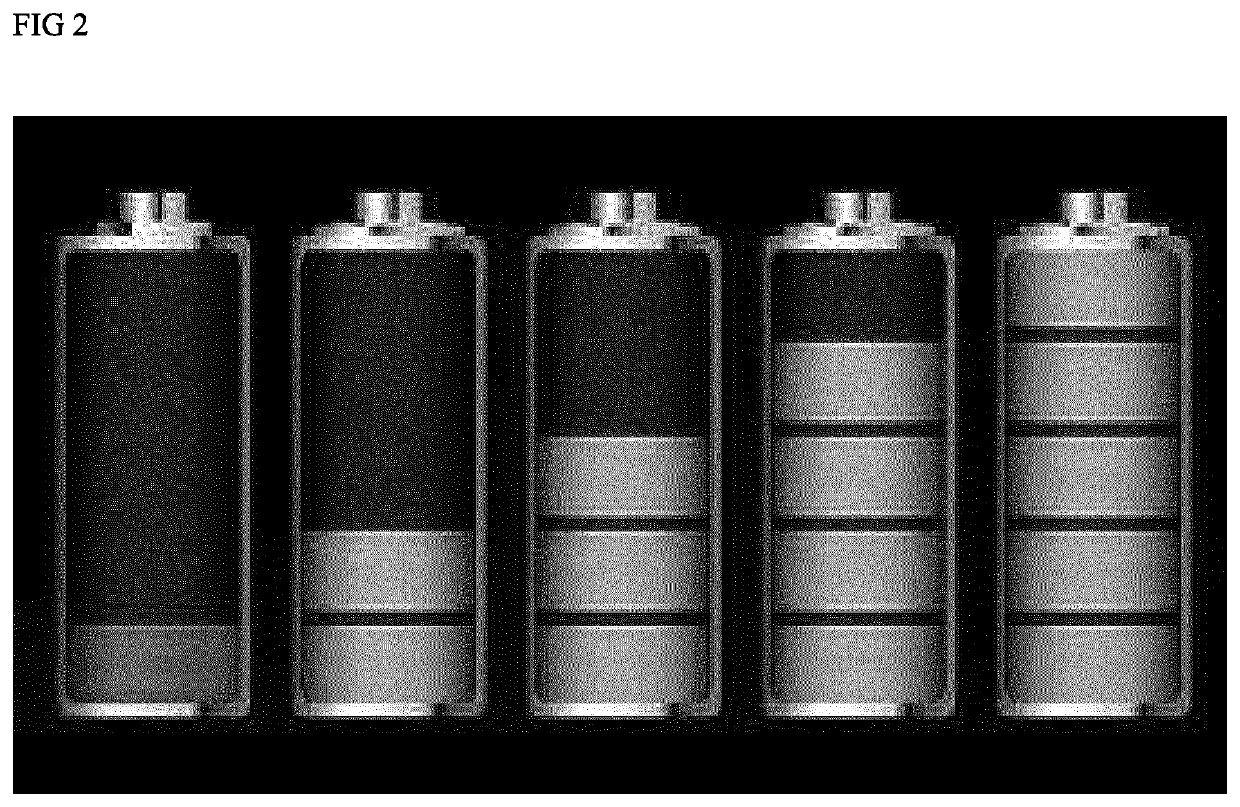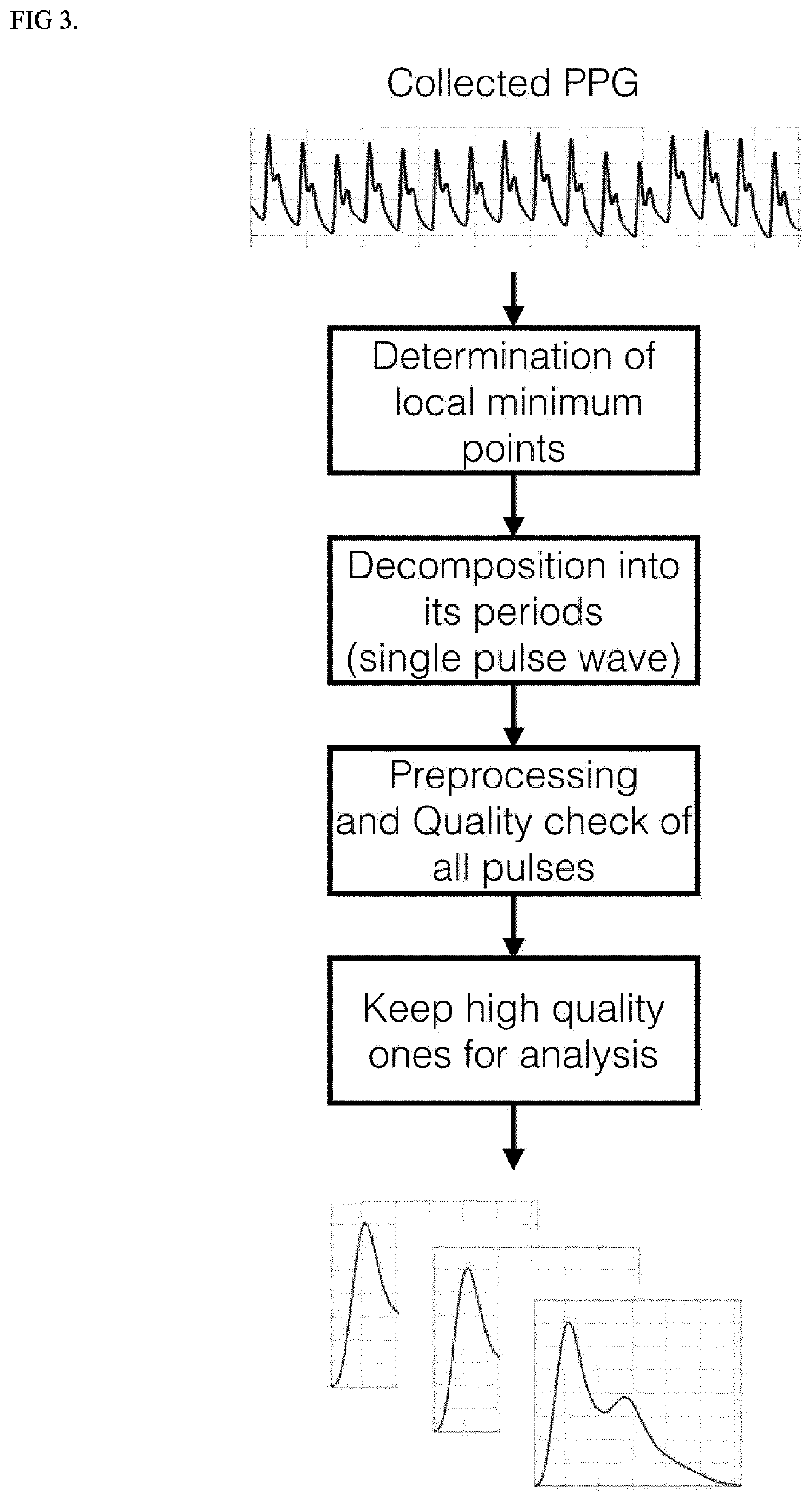Pulse wave device and method of discriminating and quantifying fatigue
a pulse wave and fatigue technology, applied in the field of pulse wave devices and methods of discriminating and quantifying fatigue, can solve the problems of physical exhaustion, difficulty in discriminating between these sources of fatigue and quantifying their resulting levels, and no single pulse wave feature that can accurately measure these different sources and levels of fatigu
- Summary
- Abstract
- Description
- Claims
- Application Information
AI Technical Summary
Benefits of technology
Problems solved by technology
Method used
Image
Examples
example 1
ation of Physical Fatigue (Running Performance Estimation)
[0269]Fifteen subjects were tested over a period of 51 days. All the subjects were university students between the ages of 20 and 30 (25 plus or minus 5), 7 were female, 8 were male. They were all considered generally healthy. The clinical trial consisted of three periods: baseline, over load, where the subjects were asked to over extend themselves with physical training and recovery, where the subjects decreased their training to the same or similar levels as during baseline. The subjects' pulse waves were recorded overnight using a pulse wave (PW) extraction and recording device like the device depicted in FIG. 1; 5 times during the 14-day baseline; 7 times during the 21-day overload training; and 4 times during the 15-day recovery. The subjects ran a 3-kilometer distance regularly during these phases and did extra physical workouts during the overload phase. The 3-kilometers run was supervised and timed. The times it took ...
example 2
Load Quantification
[0277]Fifteen subjects were tested over a period of 51 days. All the subjects were university students between the ages of 25 plus or minus 5; 7 were female; 8 were male. They were all considered generally healthy. The clinical trial consisted of three periods: baseline, over load, where the subjects were asked to over extend themselves with physical training and recovery, where the subjects decreased their training to the same or similar levels as during baseline. The subjects' pulse waves were recorded overnight using a pulse wave (PW) extraction and recording device like the device depicted in FIG. 1, 5 times during the 14-day baseline; 7 times during the 21-day overload training; and 4 times during the 15-day recovery. The subjects ran a 3-kilometer distance regularly during these phases and did extra physical workouts during the overload phase. Most of the days a TRIMP “training impulse” was calculated for each subject. TRIMP is a measurement commonly used am...
example 3
igue Quantification (Sleep Efficiency Estimation)
[0283]Fifteen subjects were tested over a period of 17 days. All the subjects were university students, between the ages of 20.4 to 23.8 (22.1 plus or minus 1.7), 8 were female, 7 were male. They were all considered generally healthy. The clinical trial consisted of three periods: baseline, sleep deprivation and recovery. The subjects were asked to sleep normally during the baseline and recovery phases. However, during the sleep deprivation phase they were asked to sleep 3 consecutive nights for 3-4 hours, each. The subjects' pulse waves were recorded overnight using a pulse wave (PW) extraction and recording device like the device depicted in FIG. 1 for 3-nights during baseline, 3-nights during sleep deprivation and 2-times during recovery. In addition, the subjects wore PSG sleep analysis equipment for 1-night at the end of each of the 3-phases.
[0284]The recorded data from the PWs for each of the 15 subjects along with the data from...
PUM
 Login to View More
Login to View More Abstract
Description
Claims
Application Information
 Login to View More
Login to View More - R&D Engineer
- R&D Manager
- IP Professional
- Industry Leading Data Capabilities
- Powerful AI technology
- Patent DNA Extraction
Browse by: Latest US Patents, China's latest patents, Technical Efficacy Thesaurus, Application Domain, Technology Topic, Popular Technical Reports.
© 2024 PatSnap. All rights reserved.Legal|Privacy policy|Modern Slavery Act Transparency Statement|Sitemap|About US| Contact US: help@patsnap.com










